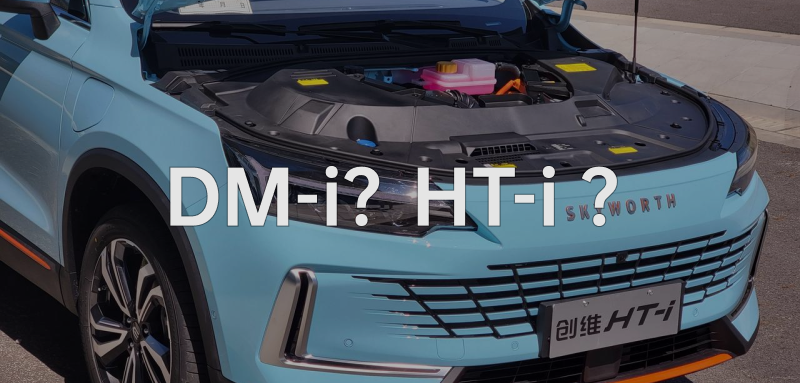Chuanqi (Skyworth Auto) has Been in the Car-making Industry for Quite A Few Years
In 2010, Huang Hongsheng, the founder of Chuanqi Group, established Kawei New Energy Automobile Group in Nanjing. He later acquired Nanjing Golden Dragon Bus in 2011 and started the business cultivation in the field of new energy buses. Therefore, I acknowledge the official statement of Chuanqi that they have been in the car-making industry for 12 years at the release conference of Chuanqi HT-i.
However, Chuanqi added a sentence “Chuanqi Auto understands car-making better than other new car-making forces” to this qualification. I am not so convinced about this statement as the competition in the commercial vehicle and passenger vehicle markets is not the same. The former focuses on business administrative capability, while the latter is guided by market competition based on product strength. Therefore, there is a causal logic problem with the statement that they understand car-making better than new forces only because they have been in the commercial vehicle industry for 12 years.
Another point is that I have already test-driven this new car HT-i on the morning of its launch. Overall, its performance is relatively normal, but there are not many valuable highlights. One of the very important highlights among the configurations that can help ordinary consumers understand and be willing to pay for is the double-motor hybrid system supplied by Fudi, which is called “DM-i” in BYD’s terminology.
What is Chuanqi HT-i?
HT-i sounds somewhat similar to DM-i in pronunciation and has similarities in writing format. However, it is not the name of a power system of Chuanqi but the name of this new car.
This is what the actual appearance of HT-i looks like:




 After taking a close look at the HT-i, it’s a design that doesn’t give a strong visual impact whether it’s from the front, side or rear of the car. Although it doesn’t easily discourage consumers from the appearance, the downside is that it lacks visual identity and is easily forgotten in today’s car industry, where face blindness is becoming more apparent.
After taking a close look at the HT-i, it’s a design that doesn’t give a strong visual impact whether it’s from the front, side or rear of the car. Although it doesn’t easily discourage consumers from the appearance, the downside is that it lacks visual identity and is easily forgotten in today’s car industry, where face blindness is becoming more apparent.
Reasonable or Not Reasonable Three-lid Design
There’s a detail in the picture that you may not have noticed: there are three lids on the HT-i, with two on the left, one front and one back, and another one on the right front.

Of these three lids, the one on the left back is for the fuel tank, the one on the left front is for slow charging, and the one on the right front is for fast charging. Some readers may already start cursing at the design. After all, putting the charging port in the front of the car is clearly less convenient compared to putting it in the back, especially when considering the current public charging environment in China. Adding to this, the fast and slow charging ports are located on different sides, which makes it even more inconvenient.
However, when you think about it, it’s not very common to find an SUV that can refuel and also support fast charging in China. Compared to PHEVs with small batteries that either can’t or don’t offer fast charging, the HT-i at least solves the problem of fast charging, and the improper placement of the charging port has become a secondary conflict.


The issue of charging port layout continues to be extended. Generally, there is a discrepancy between manufacturers and users when it comes to whether plug-in hybrid models are equipped with fast charging ports. Manufacturers consider that if a plug-in hybrid car doesn’t have a large battery, even if it supports fast charging, the ultimate charging speed won’t be much faster than slow charging, and the cost of fast charging and wiring issues is relatively insufficient compared with the output. Users, however, have a simple idea. They don’t care so much about charging speed, but if there is no fast charging port, they cannot use the DC fast charging piles at public charging stations, and they need to find charging stations with slow AC charging piles when charging outside, which significantly reduces the convenience of charging.What’s the relationship between HT-i and DM-i? In fact, this seemingly ordinary car is equipped with the second largest battery for plug-in hybrid cars under 200,000 RMB, with a capacity of 32.6 kWh and a fast charging current of up to 100 A. Therefore, the fast charging of HT-i not only considers “charging compatibility”, but also improves the energy efficiency of the large battery. For comparison, the top model of the Song PLUS DM-i comes with a lithium iron phosphate battery with a capacity of 18.3 kWh.
In my opinion, this large battery is also the most important and valuable configuration of this car besides the hybrid powertrain. By the way, it is also a ternary lithium battery.
The difference in hybrid systems is…
To introduce the power system of HT-i is actually very simple: it is the same as that of the BYD DM-i. Not only are they the same in hardware, but even the logic of forced power generation when the vehicle is in P gear and the brake is held down for a long time is also the same as that of BYD models.

In terms of actual road driving experience, HT-i exhibits the typical smoothness and low jitter characteristics of double-motor series-parallel hybrid models, and the performance of the power quality is above a good level.
Perhaps to highlight this household-oriented feature, the throttle calibration of HT-i is very “Zen-like”. The power output in the front section of the pedal is very soft, but also powerless. The power system will only become more active after the throttle is more than half open.
In steady-state driving, the perceptibility of pure electric mode and the engine intervention is present but totally acceptable. After several hours of experience, the most obvious working condition to feel the engine vibration of HT-i is idle power generation.
After several hours of experience, I think this power system is very similar to the DM-i model in terms of experience. When introducing this power system, the official person from Skyworth used many words to describe it as “super long comprehensive endurance”, with a total of 1,267 km for pure electric plus fuel.
Talking about comprehensive endurance for hybrid cars is actually not of much significance. What consumers care about are the pure electric endurance, electric consumption and fuel consumption under fuel mode. It is not difficult to guess that this is also the differentiation that the Skyworth team deliberately made in technical promotion compared with BYD.
I also paid attention to the several data of the actual vehicle. The average comprehensive fuel consumption and average electric consumption of the vehicle before the mileage was cleared are 4.5 L/100km and 18.1 kWh/100 km respectively.
In the middle of the test drive, the “mandatory power protection” mode was also turned on for 5 km, which is the fuel priority mode on other models. The 5 km is normal urban expressway driving, and the displayed electric consumption is 18.3 kWh and the fuel consumption is 8.1 L/100 km.The power system can be summarized as follows: the actual driving performance of the HT-i is almost the same as that of the BYD DM-i model, with smoother and quieter electric driving characteristics being particularly prominent. It has a large battery that cannot be ignored, supports 100A fast charging, and if used as a pure electric vehicle for daily commuting, the HT-i’s long range and energy efficiency will provide a great experience.
Next, let’s talk about what this car does well and where it falls short.
Attention to detail, but not in all areas
As someone who pays attention to the details of a car’s functions, I took a special interest in this SUV from a manufacturer with “12 years of car-making experience” during the test drive, and I have already written my conclusions in the title.
Seats can be folded down, but not completely
For example, the HT-i’s trunk is not only deep, but also offers a removable, extendable storage cover that is practical and convenient.
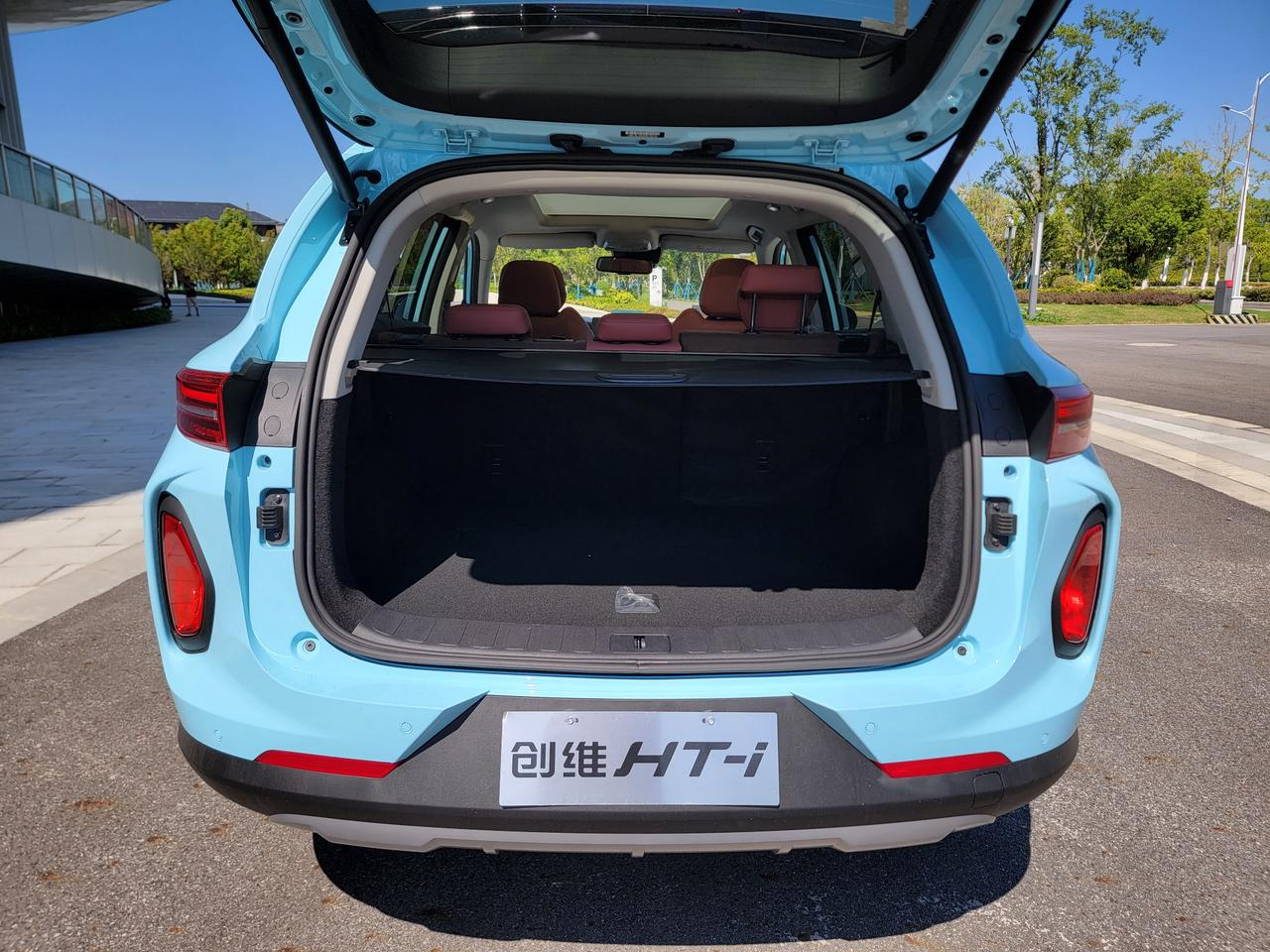
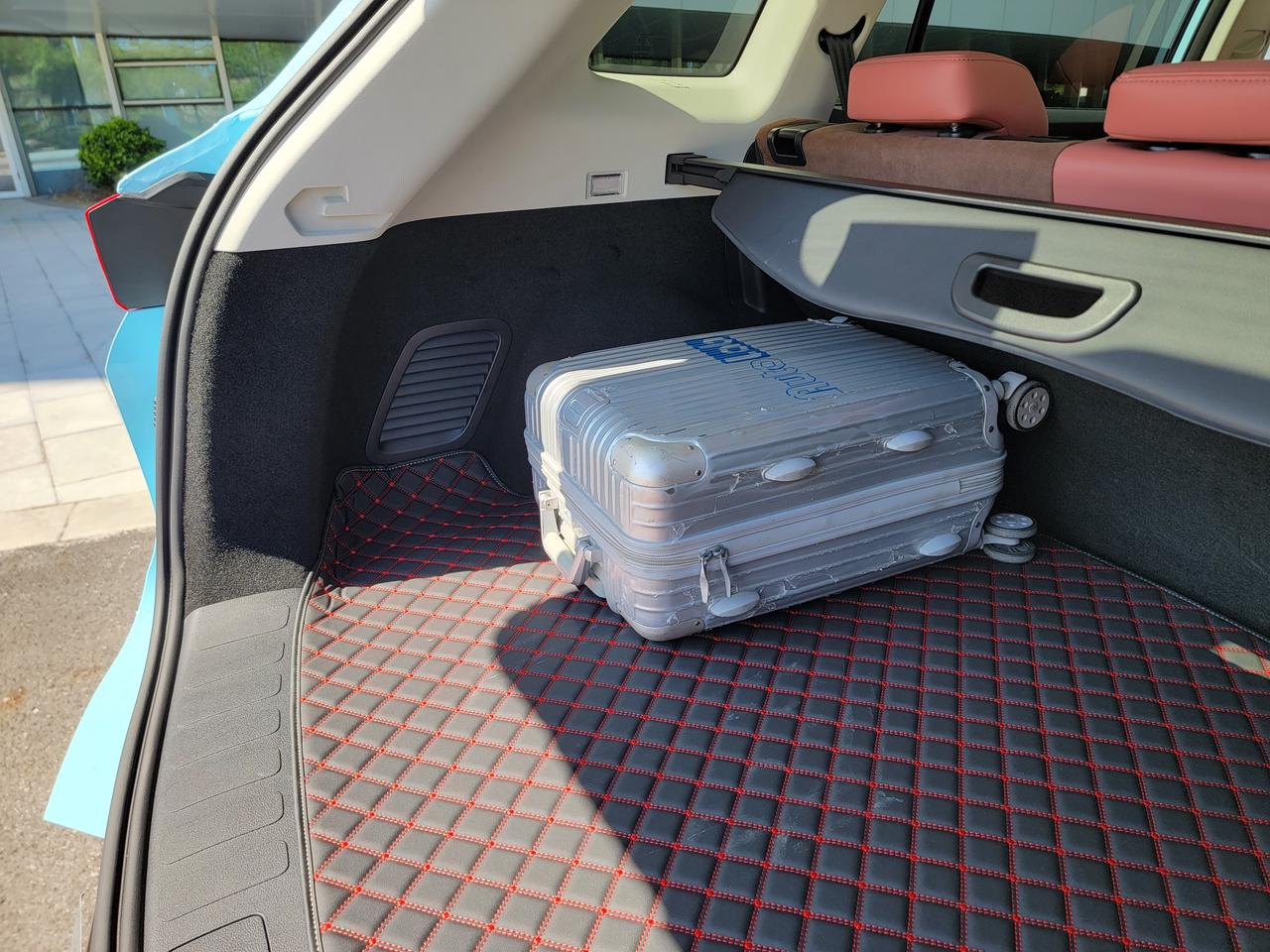
But when I tried to fold down the rear seats, an embarrassing scene occurred: the diagram below shows the maximum angle that the HT-i’s rear seats can be folded down.
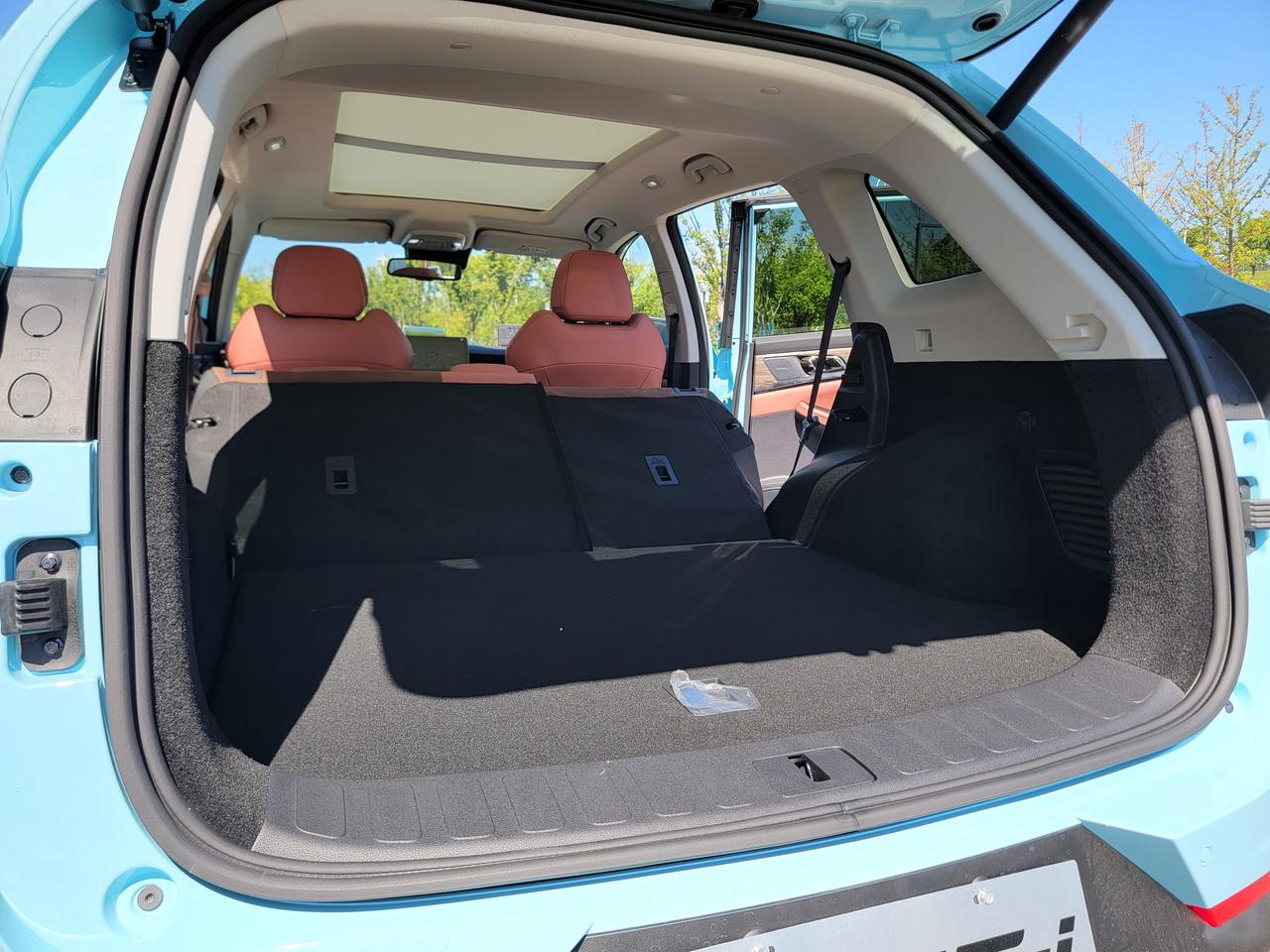
When the rear door is opened, you will find that the backrest and seat of the second-row seats interfere severely when folded down, and the backrest is pressed against the seat cushion, which limits the amount it can be lowered. The meaning of folding down the rear seat at this angle has already been lost by 80%. I did not try to lower it any further, considering the possible damage to the seats and how much more they can be lowered when there is heavy pressure.
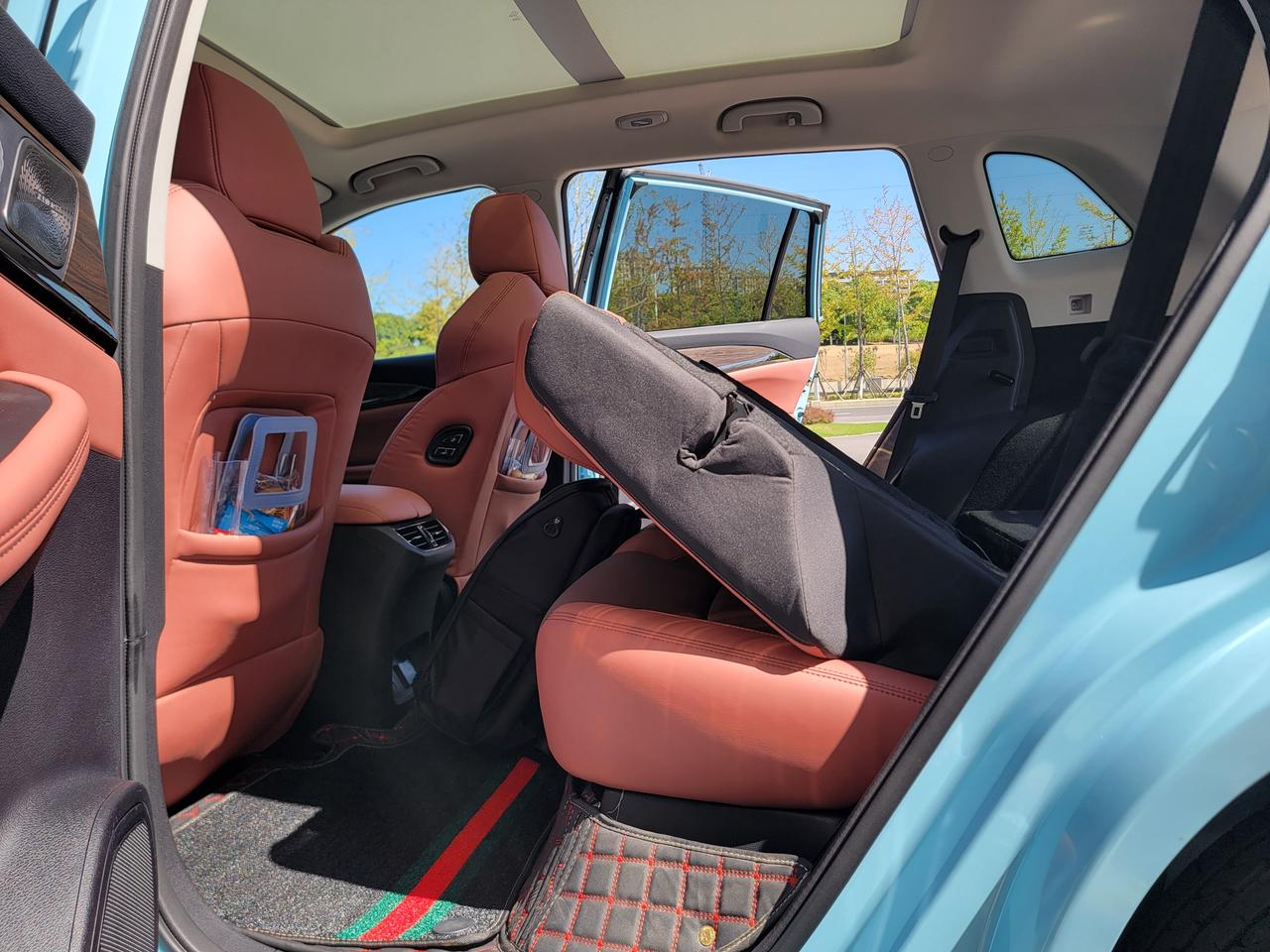
Rear space with some unexpected surprisesThe second-row seats in the HT-i do have some problems, but the comfort level is still normal. When you adjust the backrest to the most reclined position, there is enough space for both head and legroom for someone of my height of 180cm. However, like many new energy vehicles, the problem of low seating position still exists in the HT-i. The lack of thigh support for taller passengers is easily remedied by stretching out under the front seats.

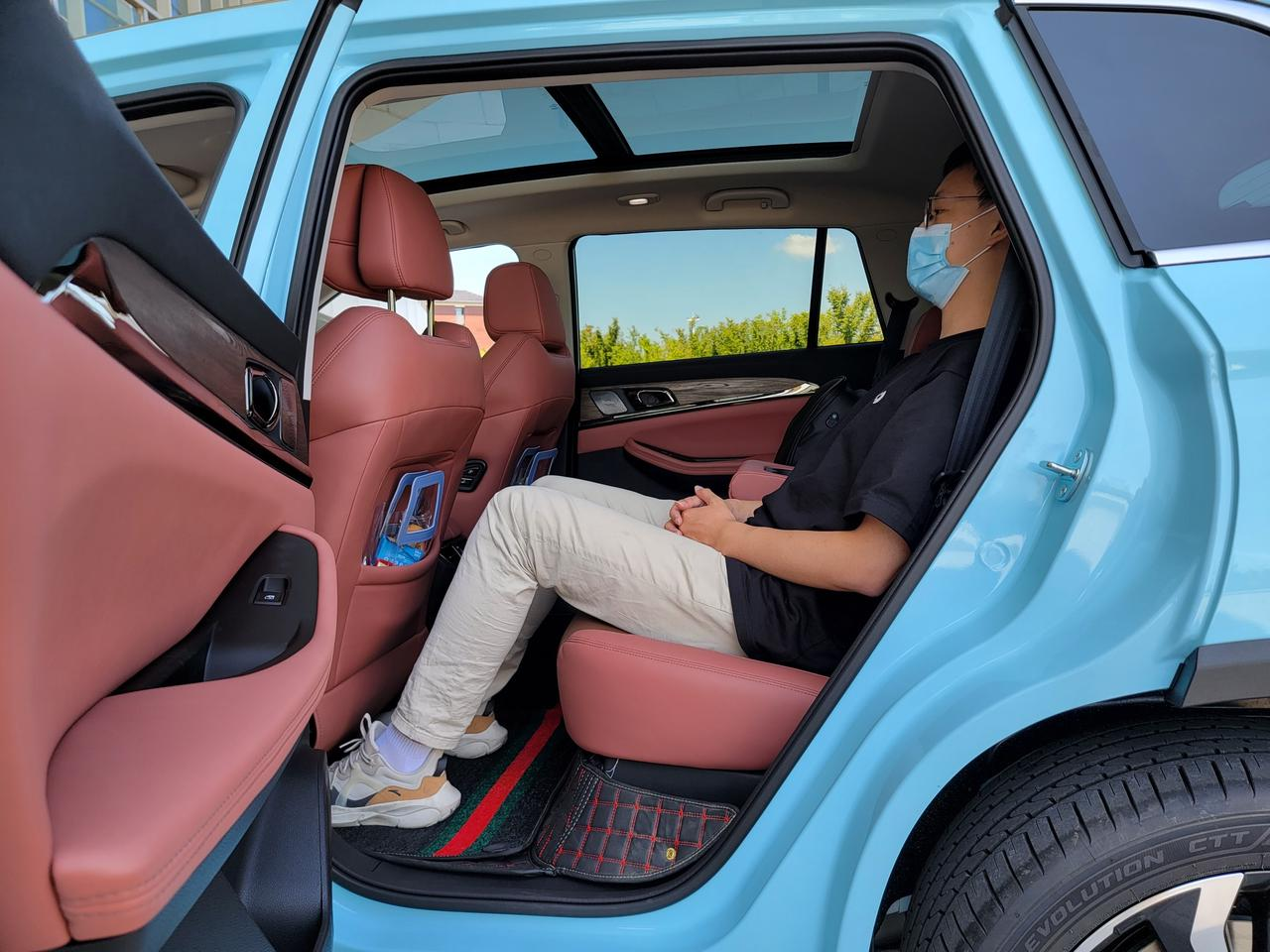
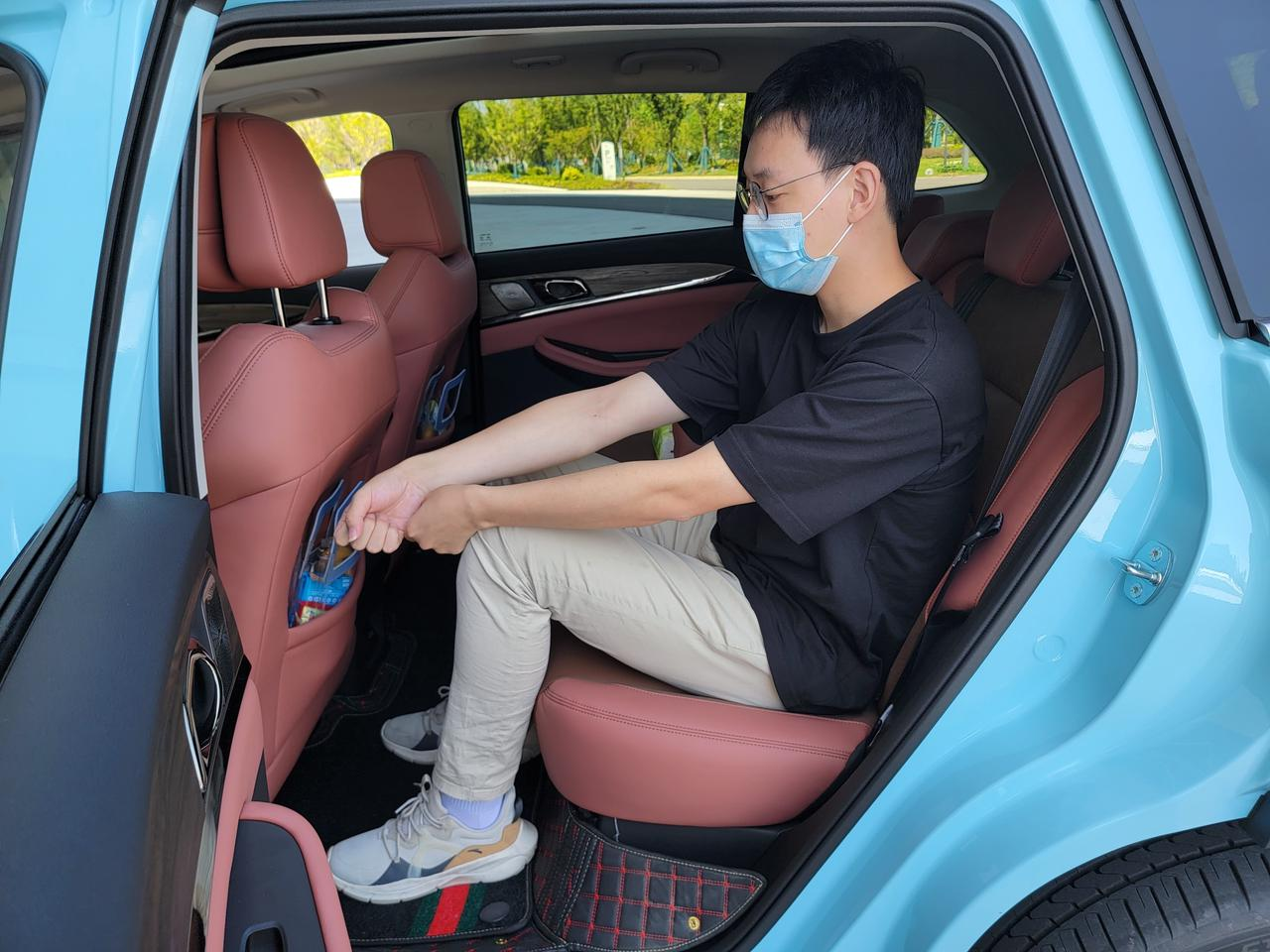
To my surprise, the front passenger seat in the back row is equipped with a “boss key.” This practice is not common in vehicles of the same price and level. Even for users who need to install a child’s safety seat in the back row, this is a convenient feature.

What is even more surprising about the second row of the HT-i is the 220-volt power outlet under the air conditioning vent. The maximum current can reach 10 A, equivalent to a maximum power of 2,200 W. Not only is it positioned towards the driver, but also, with this kind of power, even an electromagnetic oven and a small air conditioner for camping can be used when connected to a power strip. This is quite impressive.
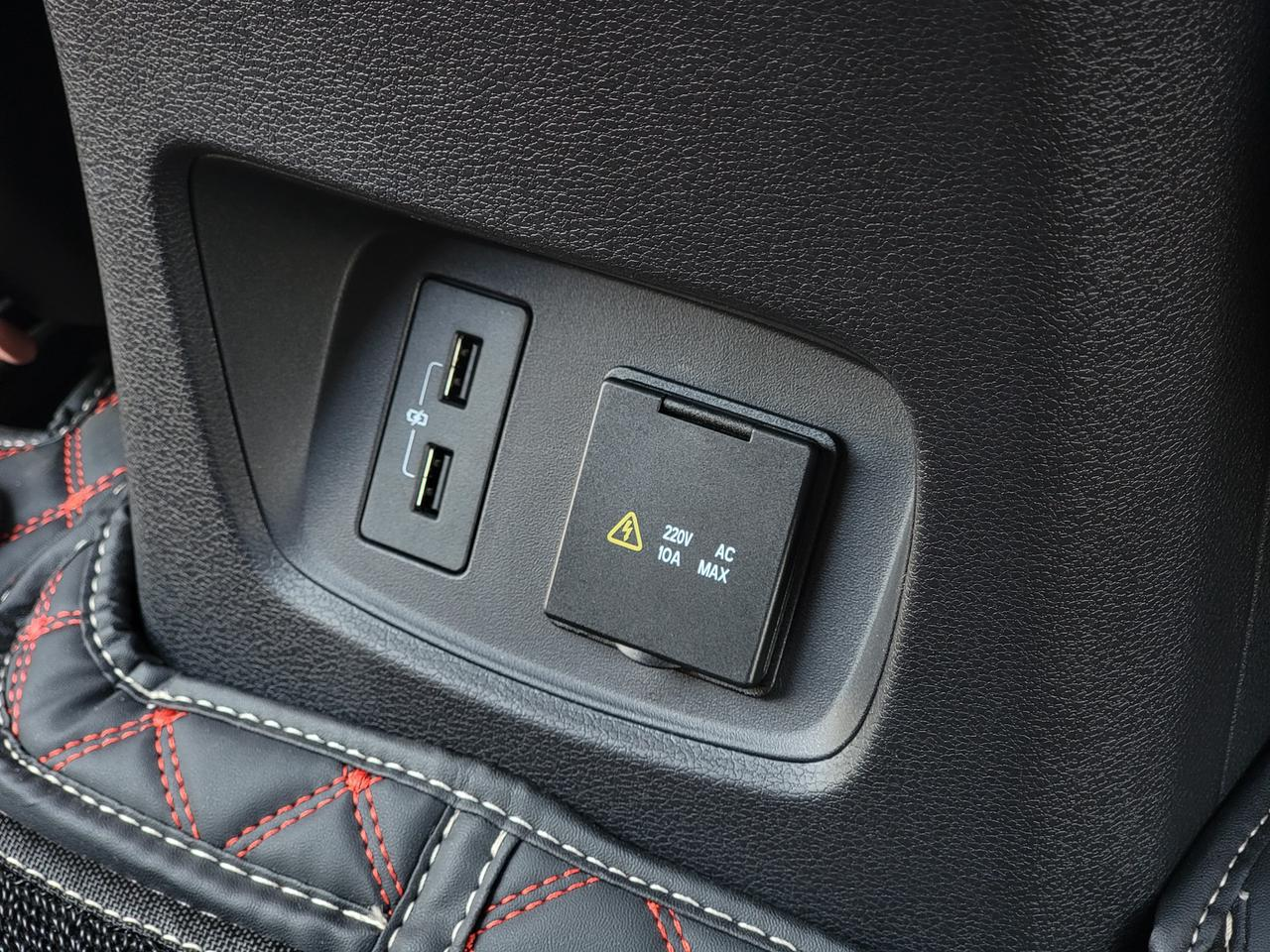
Looking up, the HT-i’s roof has an openable panoramic sunroof that comes with an electric sunshade. There is another detail here that is worth noting, which is the opening area of the sunshade. As shown in the figure, I thought there was something wrong with the sunroof when I saw the sunshade stop in this position. Only after several attempts did I realize that this was intentionally designed to be this way.
For the first position shown in the figure, the lighting effect for the front-seat passengers is not much different from when the sunshade is fully open, yet the rear passengers are still covered by the sunshade. Therefore, whether or not there are people in the back seat, you only need to open the sunshade once when you need to light up the front seat.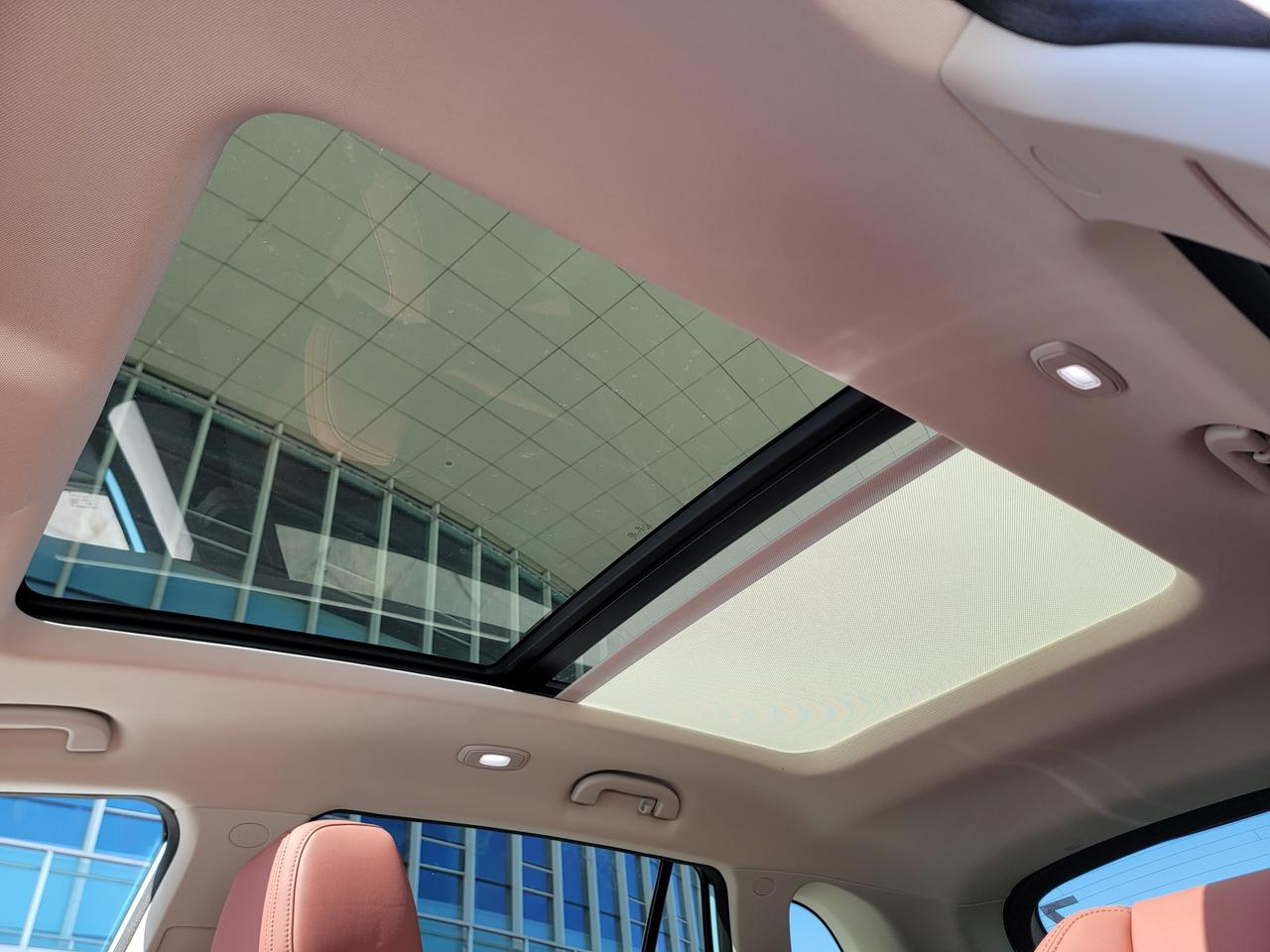
What about convenience, considering safety?
The front seat space of the Skyworth HT-i still performs ordinarily within its grade, but there are many more pitfalls in detail than the rear seats.
First of all, the length of the steering wheel is not enough. Tall drivers will feel a bit far away when holding the steering wheel with both hands. If they want their hands to be more comfortable, they have to either adjust the backrest of the seat straight so that the waist is uncomfortable, or push the seat forward so that the legs are uncomfortable.

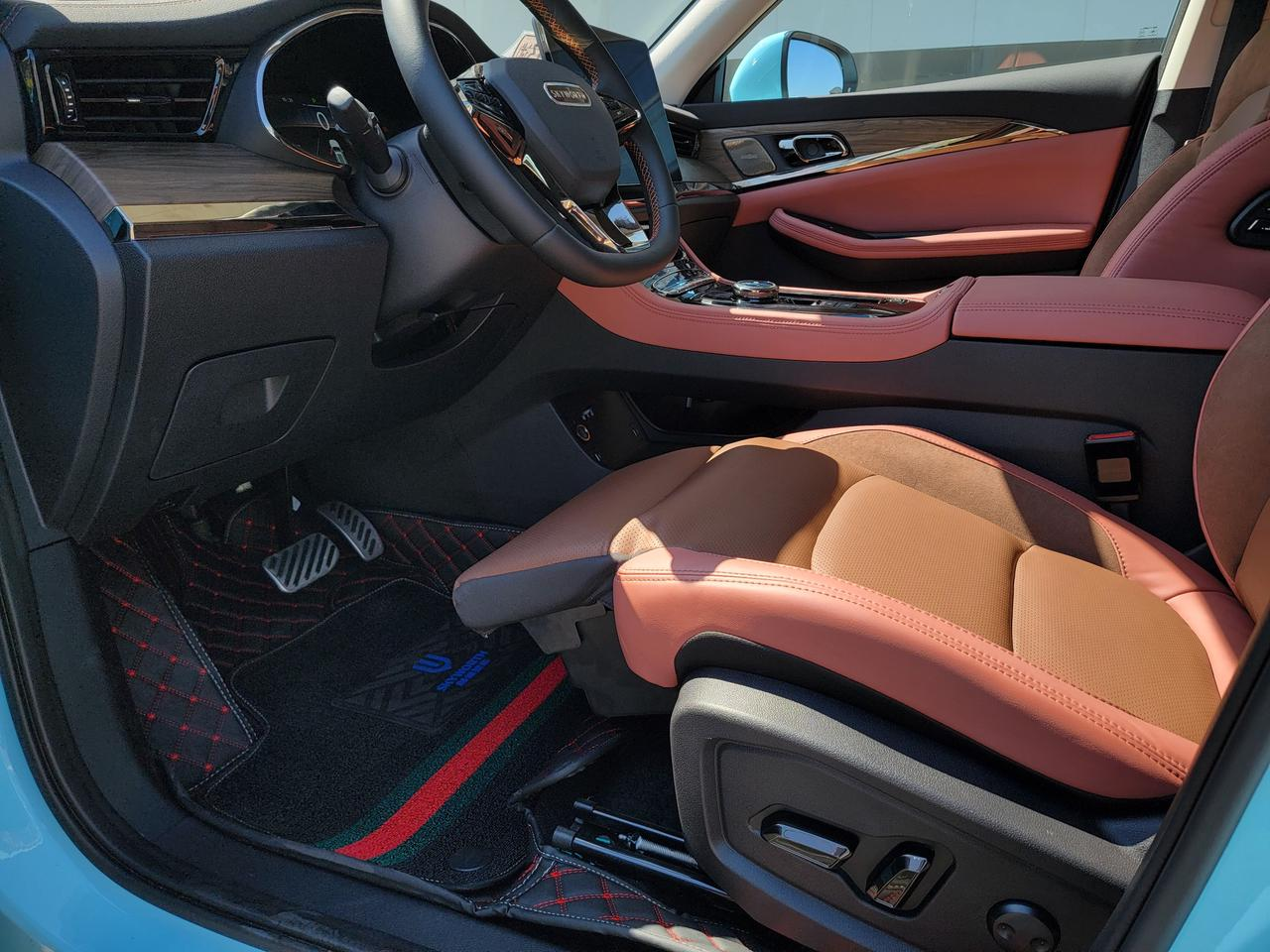
The HT-i we test drove is also very rare in that it comes with a leg rest for the driver’s seat. However, this leg rest can only be used when the vehicle is braking, electrified and not in gear, which greatly affects its convenience. I think instead of making such a static leg rest with a low coverage rate for the driver’s seat, it would be better to make it for the front passenger seat.
Speaking of the front passenger seat, the footrest on the passenger side of the HT-i has a quite obvious intrusion of the wheel arch, and stepping on it will find that the right foot is one step higher, which has a more obvious negative impact on leg comfort. Compared with such a sitting posture with short legs and long legs, I would rather adjust the seat height and put my feet flat on the floor.

No refrigerator, but the air conditioner has some tricks
On the central armrest in the car, the HT-i cleverly designed an air outlet that actually has a considerable wind output. After driving tens of kilometers with the air conditioning on, the four bottles of mineral water in the armrest were not as cool as in the refrigerator, but the temperature was obviously lower than the air temperature in the car.
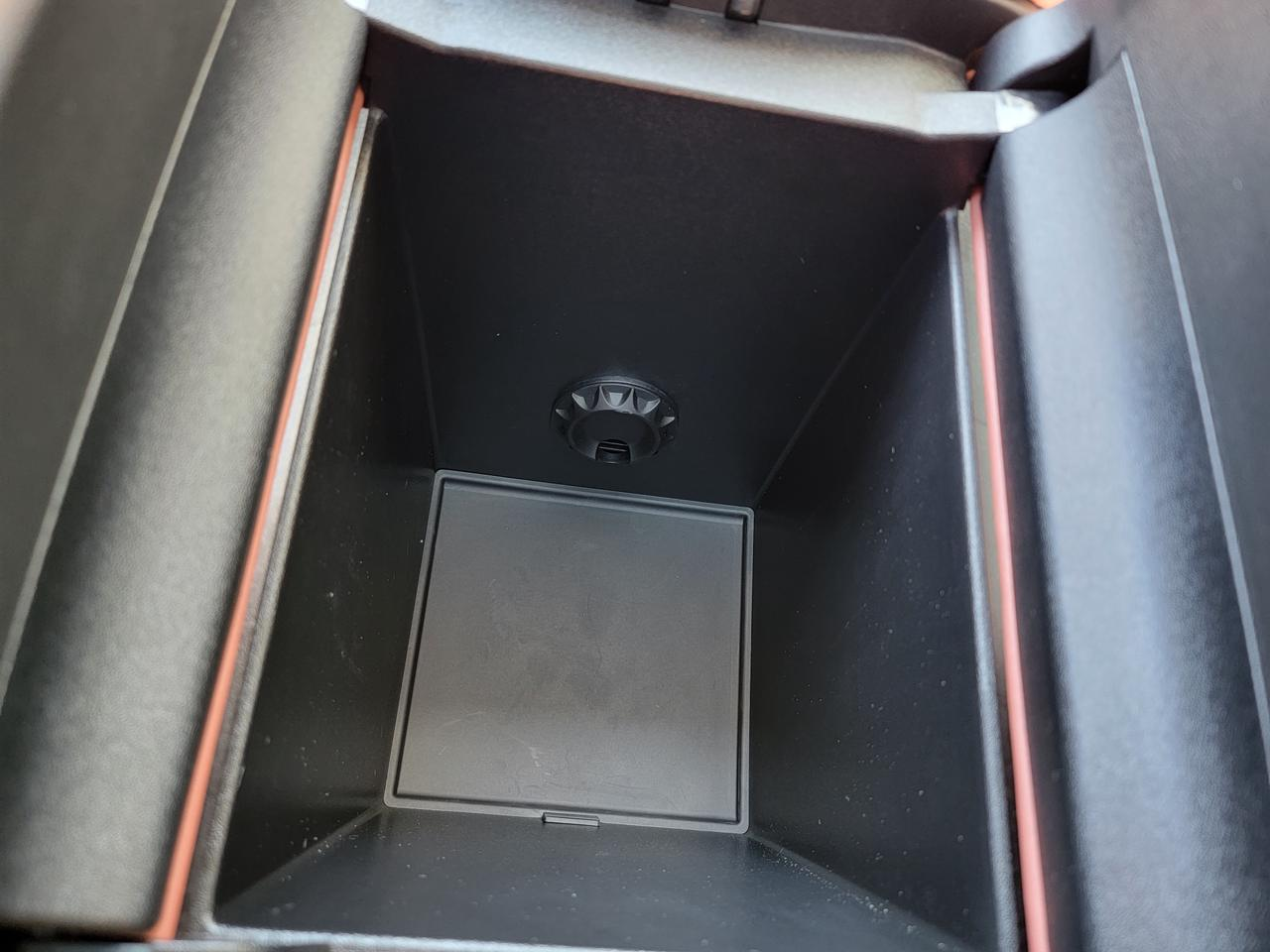
 The above are just some details I noticed in less than half a day of experience. Due to time constraints, it is not comprehensive. The interior of the HT-i is a bit conflicting. In some details, it is considerate and user-oriented, but in some major areas and key aspects, its handling is like that of a beginner. In this alternating disappointment and surprise, I feel a bit tired and regretful.
The above are just some details I noticed in less than half a day of experience. Due to time constraints, it is not comprehensive. The interior of the HT-i is a bit conflicting. In some details, it is considerate and user-oriented, but in some major areas and key aspects, its handling is like that of a beginner. In this alternating disappointment and surprise, I feel a bit tired and regretful.
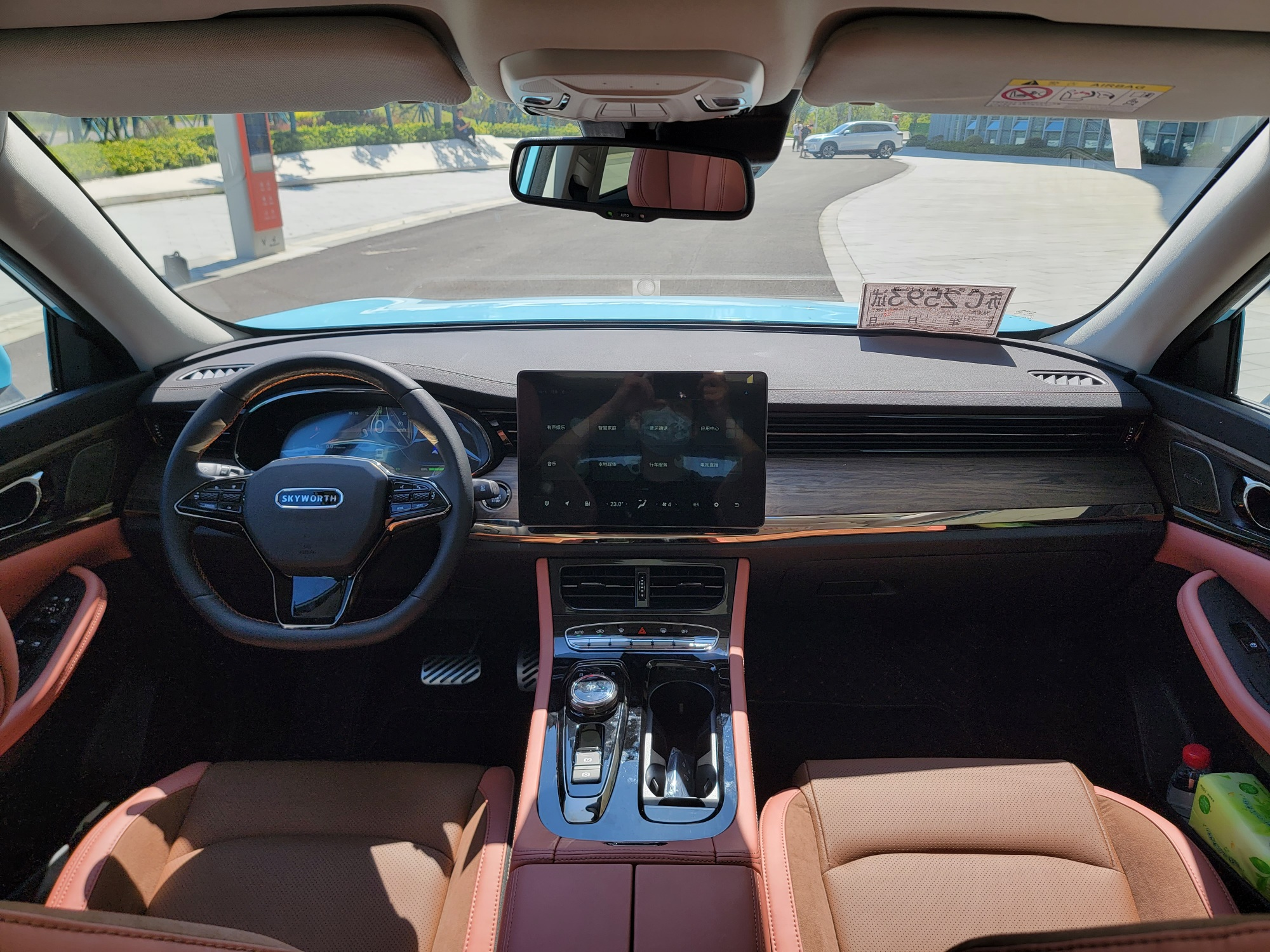
I didn’t talk about the car computer during the test drive because the experience of this part has almost no highlights. The system’s smoothness, UI, and touch interactions are all at a moderate level for traditional automakers. The efficiency of the car computer’s voice function is low, and the system will even automatically switch to full-screen mode after entering the navigation function. In summary, the comprehensive intelligent performance of this car is disappointing but meets expectations.
Conclusion
Before this test drive, I hadn’t paid much attention to the Skyworth brand for quite some time. The most recent time was when Skyworth appeared in the new car list by MIIT.
For this home appliance company that has diversified into making cars, I still have many areas of incomprehension.
On the technical side, Skyworth officially claims that its core competitive advantage is intelligent chassis technology, and it will develop higher-level wire-controlled chassis technology in the future. The subsequent “Wire Control Chassis 3.0” will support L5-level autonomous driving needs.
Regarding software, Skyworth officials stated that their previous “Skyworth” system has been developed for many years and has numerous active users and data. This was independently developed by Skyworth, and the company has done secondary development on top of this platform for Skyworth cars.
In terms of product definition, Skyworth, like many new energy vehicles today, promotes the concept of the third space. In addition to mobile offices, mobile living rooms, and mobile meetings, Skyworth’s envisioning of the third space in its PPT presentation also includes “mobile hospitals.” The car’s health functions are where Skyworth hopes to differentiate itself, and the official slogan is “Active Health Technology, Assisting in Living to 100.”
Skyworth believes that the user profile for the HT-i is the “entrepreneurial group” because Skyworth Automobile believes that what the company is doing is spiritually related to the temperament of entrepreneurs.In terms of sales channels, Skyworth has learned from Huawei’s “Cross-Border Car Sales” strategy – selling their own cars in Skyworth’s household appliance channel and attracting customers through some car-home linkage functions. Skyworth currently has about 20,000 to 30,000 home appliance stores, and their domestic distribution layout of vehicles already has 324 dealerships, which will be jointly expanded to cover a radius of 10 kilometers in the future, and will also have a distribution layout in 44 countries and regions overseas, with a target of reaching more than 80 in the future. In terms of energy supplementation, Skyworth also has a layout for “photovoltaic energy storage exchange,” and even announced that their own electric vehicles have already put several hundred on the road.
In a post-release interview, Huang Hongsheng stated that the current operating conditions of new car manufacturing companies are seriously in deficit, and whether they can survive is unknown. At the same time, he expressed respect for BYD, believing that doing self-research and scale, vertical integration in manufacturing is a powerful competitiveness and also the path that Skyworth hopes to take. Currently, Skyworth Auto has completed a round A financing, and there will be a follow-up round C financing of 5 billion, which will be prepared for listing afterwards.
After understanding the information, it can be felt that Skyworth really wants to do the car business, and their ambitions are not small. However, there are still some differences from the current status of the company and the industry and consumer awareness, many of which are quite critical.
Returning to the most important aspect of the HT-i product, the price, the information announced at the press conference is as follows:
-
205 km pure electric range version is priced from 162,800 to 199,800 RMB;
-
115 km pure electric range version is priced from 146,800 to 172,800 RMB;
-
24.28 million RMB for the exclusive customized version.
Before going public, HT-i received 14,718 orders. For the target sales volume in 2023, Skyworth Auto has set a goal of “guaranteeing 100,000 units”. Currently, in addition to HT-i, there is also a sister model EV6 on sale. If only relying on these two models, the pressure to achieve next year’s sales target is undoubtedly enormous.
The challenges here are not about prices, but about brand and product.
During the release, Huang Hongsheng described his expectations for Skyworth Auto as follows: “I hope that many years from now, when I travel by plane to different parts of the world, our dealers will pick me up in Skyworth’s cars.”
This article is a translation by ChatGPT of a Chinese report from 42HOW. If you have any questions about it, please email bd@42how.com.
